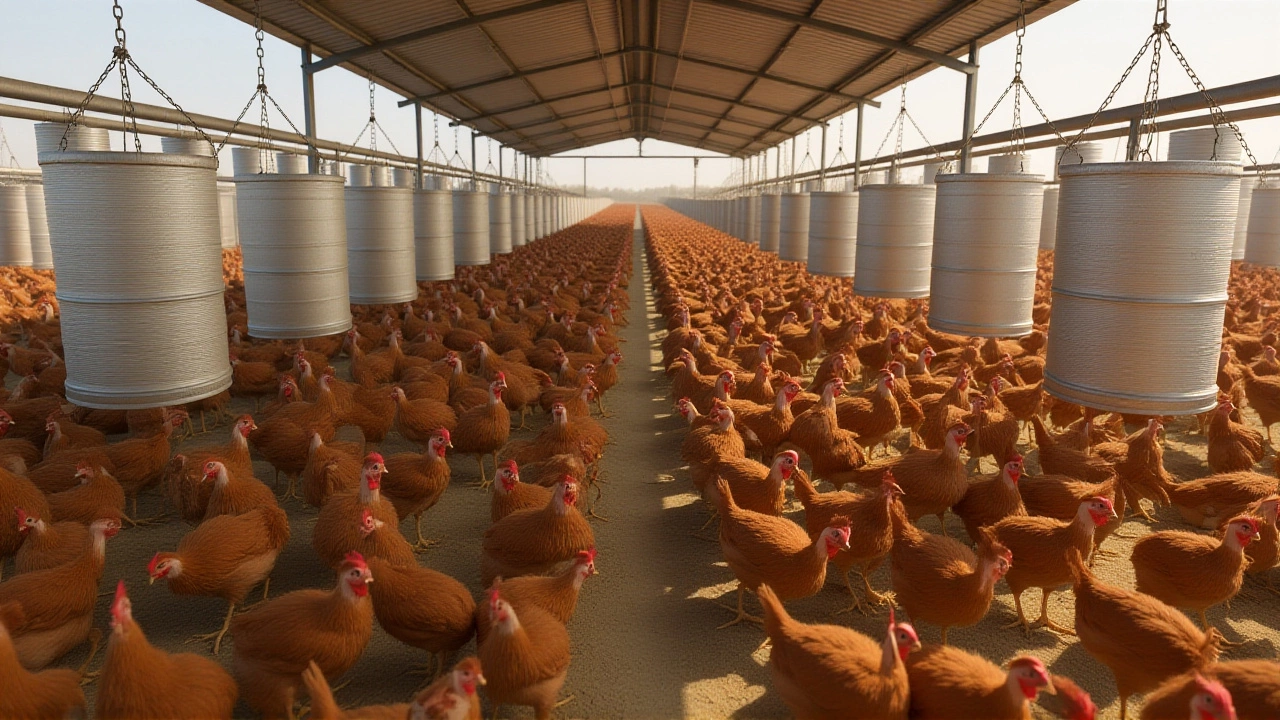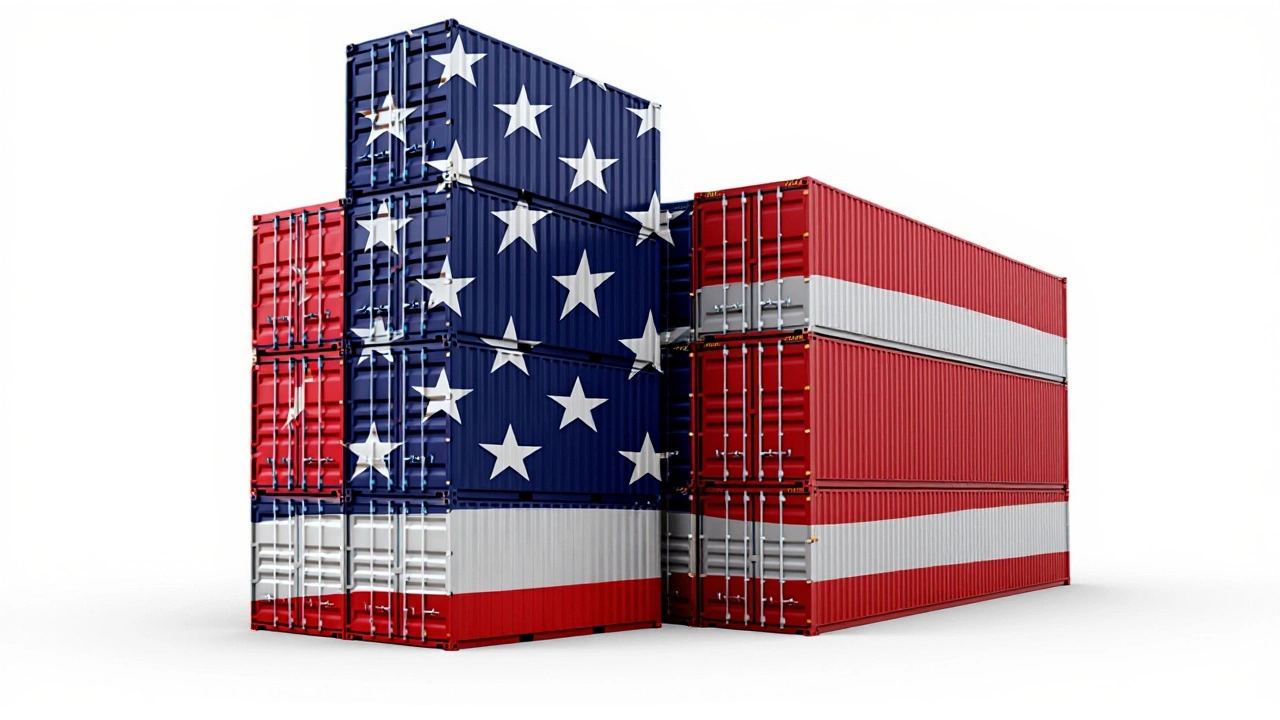When Jamieson Greer, United States Trade Representative, announced a new trade framework with Ecuador on November 13, 2025, it wasn’t just another press release—it was a quiet revolution in how the U.S. does business in Latin America. The deal, signed just weeks earlier by President Donald J. Trump and President Daniel Noboa, swaps tariff relief for concrete reforms: Ecuador must scrap its pre-shipment inspections, overhaul its Single Window customs system, and extend its Authorized Economic Operator program to express couriers—all within 90 days. In return, American goods will flow into Quito with fewer barriers, and Ecuadorian exports like bananas, shrimp, and cocoa will gain preferential access to U.S. markets. The twist? This isn’t a new treaty. It’s a blueprint. And it’s being copied from the United States-Mexico-Canada Agreement—USMCA.
USMCA as the New Template
For years, USMCA was seen as a regional pact, a North American update to NAFTA. But now, it’s becoming a playbook. The U.S. is no longer negotiating broad, multilateral deals. Instead, it’s cherry-picking the most enforceable, bite-sized parts of USMCA—like intellectual property rules, customs modernization, and labor transparency—and applying them bilaterally. Greer confirmed this shift during a September 30, 2025, speech at the New York Economic Club, saying the upcoming 2026 USMCA review “will probably be bilateral.” That’s a seismic departure from the original trilateral spirit of the deal. Even Marcelo Ebrard, Mexico’s Economy Secretary, acknowledged it: “Part of the USMCA negotiations have a high bilateral content.”
Why now? Because Mexico’s compliance is slipping. The USTR’s October 2025 Investment Climate report revealed a troubling gap: in 2024, Mexico reported zero criminal investigations into trademark counterfeiting or copyright piracy. Its Attorney General’s Office hasn’t published IP enforcement stats in five years. U.S. investors are fed up—with energy access blocked, corruption rampant, and regulatory uncertainty looming. So Washington turned its attention southward, toward countries like Ecuador that are more willing to move quickly.
Ecuador’s Endgame: Trade Access as Leverage
Ecuador isn’t doing this out of altruism. It’s doing it because it needs American investment. The country’s economy has been stuck in slow motion since 2020, with inflation hovering near 10% and foreign direct investment down 22% since 2022. The trade deal isn’t just about exports—it’s about signaling stability. By agreeing to the USTR’s 2025 Special 301 Report demands—particularly on geographical indications and IP transparency—Ecuador is telling global investors: “We’re serious.”
The three-month deadline for customs reforms is no accident. It’s a test. If Ecuador delivers, it opens the door to similar deals with Guatemala, El Salvador, and Argentina. If it falters? The tariff relief vanishes. That’s the leverage. As Americas Quarterly noted in its November 2025 analysis, “Panama and Ecuador may adopt a more transactional approach, utilizing their trade access as leverage.” In other words: no reforms, no access.

The Hidden Clock: USMCA’s 2036 Deadline
Here’s the thing most people miss: USMCA has an expiration date. Unless all three parties agree to renew it, the agreement terminates in 2036. That’s just 11 years away. The mandatory sixth-year review, scheduled for 2026, is the first real pressure point. The USTR opened public comment on September 30, 2025, with a deadline of November 3, and a public hearing set for November 17. Over 1,200 comments have already poured in—from automakers, farmers, labor unions, and tech firms—all demanding changes.
But the U.S. is no longer waiting for consensus. It’s building parallel tracks. The Ecuador deal is the first of what could be a dozen. Each one reinforces the USMCA model without needing Mexico or Canada’s approval. That’s why the White House quietly greenlit this approach in late 2024, after bipartisan pressure from two U.S. senators who urged the Biden administration to “start trade-agreement talks with Ecuador and Uruguay, using a pact with Mexico and Canada as the structural model.” That’s not just policy—it’s strategy.
What’s Next? The Domino Effect
Next up: Argentina. Buenos Aires has been quietly signaling interest, especially after its 2025 currency stabilization plan stalled. If Ecuador’s reforms succeed, expect a similar offer: remove tariffs on beef and wine in exchange for judicial transparency on IP enforcement. El Salvador, already a top remittance hub, could be next—offering digital service access in return for customs digitization.
But here’s the risk: if these deals look like U.S. coercion, Latin America may push back. Ecuador’s Congress hasn’t yet ratified the framework. And while President Noboa has strong executive powers, public opinion is wary. In Quito, street vendors and small farmers fear cheaper U.S. corn and soy will undercut local producers. The government has promised $150 million in agricultural transition funds—but details are still unclear.
Meanwhile, Mexico is watching closely. Ebrard’s team is already drafting counterproposals to strengthen trilateral cooperation—just in case the U.S. walks away from the table. The game has changed. It’s no longer about North American unity. It’s about who moves first.

Why This Matters to You
If you buy imported coffee, electronics, or pharmaceuticals, this deal affects your wallet. Faster customs means lower prices. Stronger IP rules mean fewer counterfeit goods. But it also means U.S. companies get preferential access to new markets—and that could mean job shifts. Tech firms in Silicon Valley may expand operations in Quito. Textile manufacturers in Texas might shift supply chains from Mexico to Ecuador. It’s not just trade policy. It’s labor policy. Supply chain policy. Economic policy.
And if the U.S. keeps using USMCA as a template, we’re not just changing trade. We’re rewriting the rules of economic diplomacy in the Western Hemisphere—one bilateral deal at a time.
Frequently Asked Questions
How does this affect Ecuadorian farmers and small businesses?
While the deal opens U.S. markets for Ecuador’s premium exports like bananas and shrimp, small farmers fear competition from subsidized U.S. agricultural products. The government has pledged $150 million in transition funds, but no specific allocation plan has been published. Critics warn that without targeted subsidies and training, local producers could be squeezed out within two years.
Why is the U.S. shifting from multilateral to bilateral trade deals?
Multilateral deals like USMCA are slow, requiring consensus among three countries. With Mexico failing to enforce IP rules and Canada pushing for energy protections, the U.S. is finding faster results by negotiating directly with countries like Ecuador that are more flexible. This lets Washington enforce specific reforms without getting bogged down in regional politics.
What happens if Ecuador doesn’t meet the 90-day deadlines?
The U.S. has reserved the right to reinstate tariffs on qualifying Ecuadorian exports immediately. The Trade and Investment Council, established in 1990, will conduct quarterly reviews. Missing one deadline triggers a formal warning; missing two could suspend tariff relief. This isn’t theoretical—similar enforcement actions were taken against Honduras in 2023 over labor compliance.
Is this deal legally binding yet?
No. The Joint Statement is a framework, not a treaty. Ecuador’s Congress must ratify the final agreement, and the U.S. Senate must approve it under the Trade Promotion Authority. That process could take 12–18 months. Until then, the commitments are political, not legal. But both sides are treating them as binding—because failure could damage future negotiations.
How does this impact U.S. consumers?
In the short term, expect slightly lower prices on Ecuadorian goods like coffee, flowers, and shrimp due to reduced tariffs and faster customs clearance. In the long term, stronger IP protections could mean more innovation in pharmaceuticals and tech imports. But if U.S. companies shift production to Ecuador, some manufacturing jobs in border states could decline—a trade-off policymakers are already debating.
Could this lead to a new trade bloc in Latin America?
Unlikely. Most Latin American nations still favor regional blocs like Mercosur or the Pacific Alliance. But if more countries adopt the USMCA-style bilateral model, we could see a patchwork of U.S.-aligned trade networks emerge—similar to how the EU has bilateral deals with individual countries. The real winner? Companies that can pivot quickly between markets with aligned rules.
